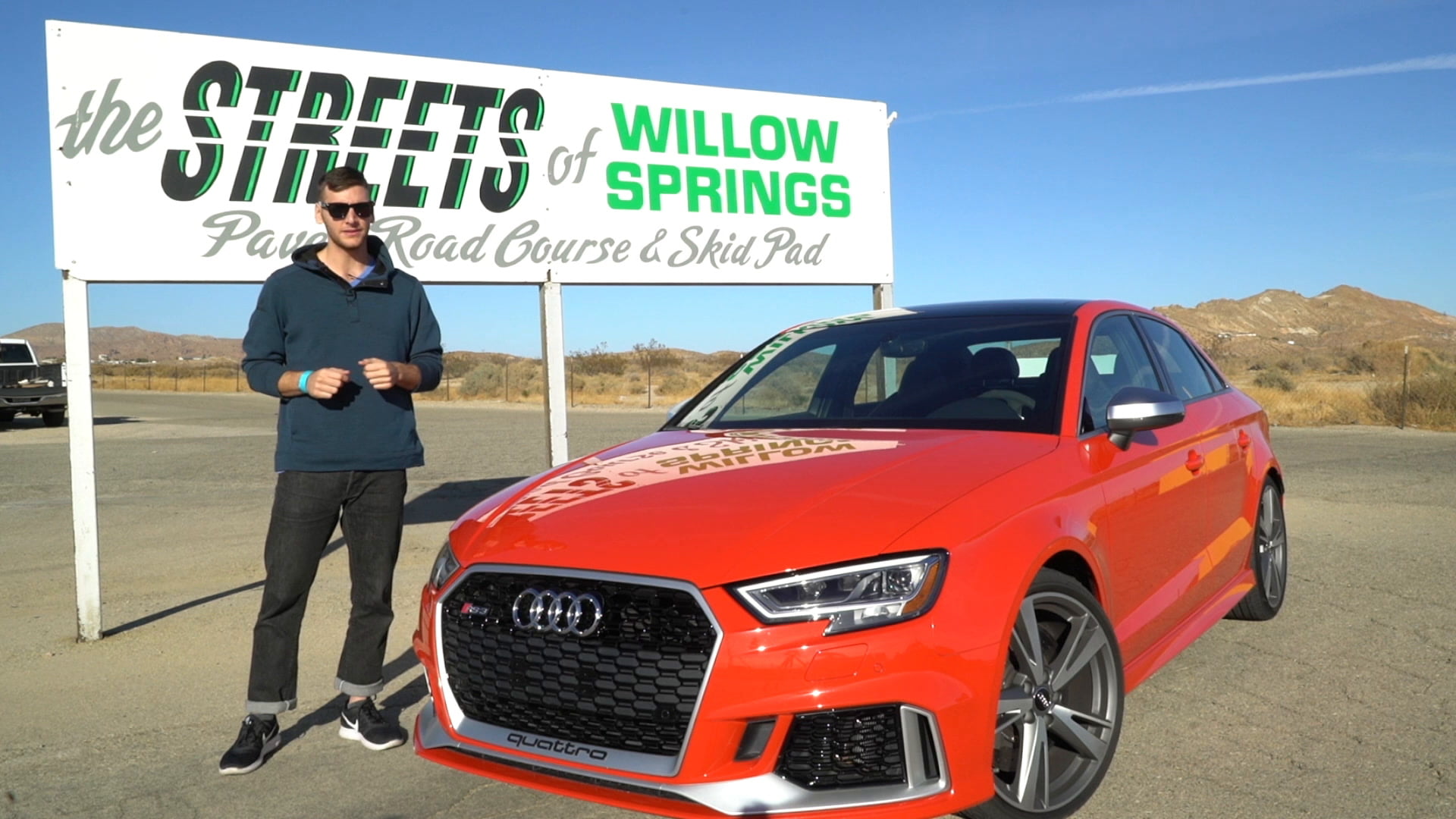
HIGHS
- Surging torque
- Huge bite, zero-fade braking
- Smooth, snappy shifts
- Tractable performance on the daily
LOWS
- Some interior cheapness feels out of place for its $55K price tag
Cramming absurd amounts of power into compact automobiles is an art form. Thanks to Volkswagen’s pioneering work with the Golf GTI, the hatchback body style is the most common vessel for these engineering experiments. Something about the blend of utility and performance gets the modern car enthusiast all riled up.
Though hot hatch love is universal, Americans have historically been overlooked by European and Japanese automakers. When jealousy got the better of us, we’d find the nearest V8 muscle car and rip a burnout; alas, it was only a short-term solution. Then, what felt overnight, manufacturers began shipping their automotive untouchables to the U.S. In came Ford’s Focus RS, Honda’s Civic Type R, and Audi’s RS3 – just as they appeared overseas…well, almost.
The five-door hatchbacks exceeded even our most inflated expectations, but Audi’s insistence on a sedan-bodied RS3 rubbed us the wrong way. At first we scoffed, but then we got a look at its spec sheet. “400 horsepower, you say? Might as well take it for a spin before passing judgment.” To conduct a fair trial, we took the baby RS on roadways and raceways — at sea level, and 2,500 feet above it. Now it’s time to read the verdict: here’s our 2018 Audi RS3Review.
WHAT’S NEW
Abroad, Audi has sold two generations of its RS3, both with an inline five-cylinder engine made from cast-iron. 2017 was both the first model year for the U.S. market RS3 and the first application of Audi’s aluminum block five-cylinder (shared with the TT-RS). The 2018 model year RS3 now receives blind spot monitoring and rear cross-traffic alert as standard, but all other changes from 2017 take the form of optional packages.
TRIM LEVELS AND FEATURES
As both the entry point for Audi’s most pumped-up performance cars and the A3 model line’s uppermost designation, the RS3 is styled for impact. At the front, the RS3’s wider track (compared to A3/S3 versions) features larger air intakes with platinum slats to match current RS vehicles. Standard LED headlights and daytime running lights assure eye-searing goodness after dark, while a prominent “Quattro” badge at the base of the honeycombed grille points to the car’s all-wheel drive setup.
In profile, standard 19-inch five-arm blade wheels can be finished in silver, titanium, or with black accents. Choose the Black Optic Package ($1,300) to add black housings for the mirror caps, a black grille surround, and a black rear lip spoiler. At the rear, a platinum trim piece outlines the diffuser and a pair of large oval exhausts. As we’ve come to expect from Audi RS products, the overall look is sharp and imposing without crossing into garish territory.
At its $55,900 starting point ($400 more than last year), the 2018 Audi RS3 is loaded with standard features like a panoramic sunroof, keyless entry and ignition, a backup camera, front and rear parking sensors, heated front seats, heated, auto-dimming mirrors, dual-zone automatic climate control, HD Radio, Apple CarPlay, Android Auto, Bluetooth, HD Radio, and dual USB ports. Audi also offers a number of packages to nudge the RS3 higher in the luxury hierarchy.
TECHNOLOGY OVERVIEW
Audi’s all-new A8 and A7 are pushing the boundaries for driver safety and convenience technologies, but even the lowly A3 packs a number of gadgets. Beyond the standard goodies listed above, Audi offers a Technology Package ($3,200) that includes MMI Navigation and MMI Touch, Audi Connect apps, Audi’s Virtual Cockpit digital display, and a 14-speaker Bang & Olufsen sound system.
The overall look is sharp and imposing without crossing into garish territory.
Only in the TT and R8 will you find Audi’s now-familiar 12.3-inch digital driver display as standard, but the price of admission soon becomes an afterthought the more you interact with this superb interface. Abundant telemetry, mapping, and multimedia data are accessible via an intuitive, customizable, and vivid display. Since Virtual Cockpit made its debut three years ago, several automakers have introduced their own digital dashboards, but none feel as seamless as Audi’s effort.
Whether you prefer a digital or analog cockpit, a standard 7.0-inch monitor is perched on the dashboard. Unlike the tacked-on screens in certain Mercedes-Benz, products, however, you can slip the display into the dash at the press of a button. Drivers can operate Audi’s MMI infotainment system via steering wheel-mounted buttons, voice commands, or the MMI Touch controller (if equipped).
INTERIOR FIT AND FINISH
Inside, Audi makes an effort to spruce up the entry-level A3’s cabin, but there’s only so much that can be done to make a $30K car feel worthy of its near-$60K price tag. A set of quilted leather sport seats, micro-fiber suede inserts in the steering wheel, on the shift lever, and within the door panels, and optional carbon fiber inserts are chief among the RS3’s stylistic upgrades.
Without any package add-ons, the RS3 is more affordable, but its cabin is largely frill-less. Enhanced with the digital instrument cluster, the B&O sound system, and the $1,000 RS Design pack’s red accents, the RS3 assumes the role of a premium product – notwithstanding some budget shift paddles and a hard-paneled dashboard.
Look beyond the cabin layout and the RS3 experience improves significantly. Worthy of note is the little sedan’s supple ride quality and comfortable seats, which are on par with any luxury vehicle. Audi’s magnetic ride dampers can stiffen for flatter cornering, but they can also soften for smoother commuting. Even with the optional fixed suspension, the RS3 stops short of a punishing ride — evening out the harshest bumps before they hit rider rumps. Similarly, the sport bucket seats may look aggressive, but in fact afford daily driving comfort and effective bolstering during high-G maneuvers.













